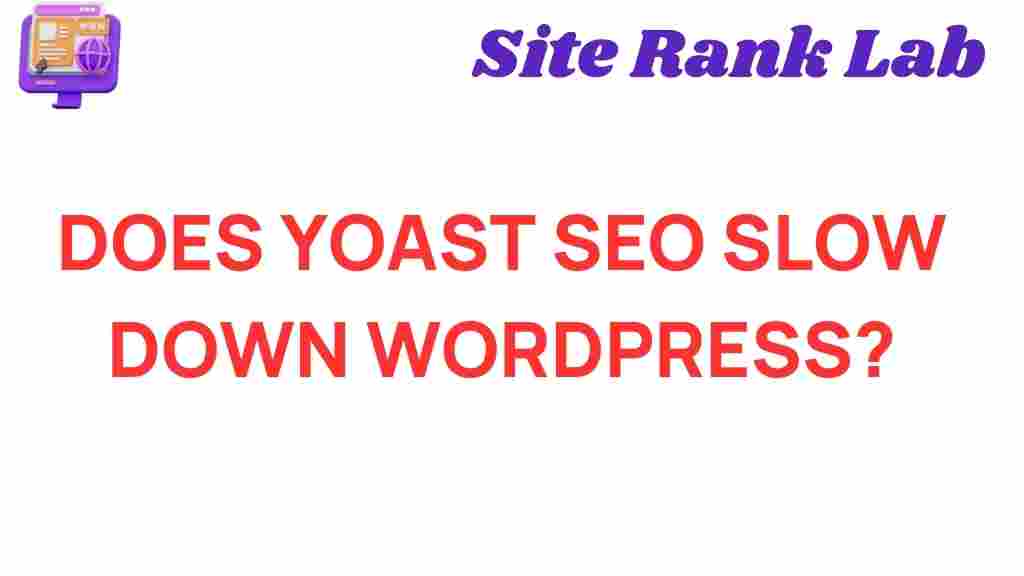Does Yoast SEO Really Slow Down Your WordPress Site?
In the ever-evolving world of digital marketing, ensuring that your website is optimized for both search engines and user experience is crucial. One of the most popular tools for optimizing WordPress sites is the Yoast SEO plugin. However, a common concern among website owners is whether this powerful SEO plugin affects website performance and site speed. In this article, we will explore the impact of Yoast SEO on your WordPress site’s performance, discuss optimization strategies, and provide troubleshooting tips.
Understanding the Relationship Between Yoast SEO and Website Performance
To comprehend whether Yoast SEO slows down your WordPress site, it’s essential to first understand how SEO plugins work. They provide various functionalities, including:
- On-page SEO analysis
- XML sitemap generation
- Meta tag management
- Content readability analysis
These features can enhance your website’s visibility in search engine results, but they may also introduce additional code and processes that could potentially impact website load time.
The Importance of Site Speed in Digital Marketing
A fast-loading website is critical for both user experience and SEO. Search engines like Google consider site speed as a ranking factor, and a slow website can lead to higher bounce rates and lower conversion rates. Thus, website performance is not just a technical issue; it is a significant component of your overall digital marketing strategy.
How to Assess the Impact of Yoast SEO on Your WordPress Site
Before jumping to conclusions, it is important to assess the actual impact of Yoast SEO on your WordPress site’s performance. Here is a step-by-step process:
1. Check Your Current Site Speed
Use tools like Google PageSpeed Insights or GTmetrix to evaluate your current site speed. Take note of your loading times and any performance scores.
2. Install Yoast SEO
If you haven’t already, install the Yoast SEO plugin. Configure it according to your needs, but be mindful of enabling only the features you require, as more functionalities can lead to increased load times.
3. Reassess Your Site Speed
After installing and configuring Yoast SEO, test your site speed again using the same tools from step one. Compare the loading times before and after the installation to determine if there is any noticeable difference.
4. Analyze the Results
If you find that your site’s speed has decreased significantly, it’s important to analyze which specific features of the plugin may be contributing to this. Consider the following:
- Excessive use of meta tags
- Heavy XML sitemap generation
- Overuse of readability analysis
Troubleshooting Yoast SEO Performance Issues
If you suspect that Yoast SEO is slowing down your site, there are several troubleshooting tips you can employ:
1. Optimize Plugin Settings
Go through the Yoast SEO plugin settings and disable unnecessary features. For example, if you don’t need the readability analysis or certain social media integrations, turn them off to lighten the load.
2. Use Caching Plugins
Implement a caching plugin such as W3 Total Cache or WP Super Cache. Caching can significantly improve your site’s load time by serving static copies of your pages rather than generating them dynamically for each visitor.
3. Optimize Your Images
Large images can slow down your site considerably. Use image optimization plugins like Smush or EWWW Image Optimizer to compress images without losing quality.
4. Minify CSS and JavaScript
Minifying your CSS and JavaScript files can reduce their size and improve load times. You can use plugins like Autoptimize to automate this process.
5. Regularly Update Your Plugins
Ensure that all your plugins, including Yoast SEO, are updated regularly. Developers continuously improve the performance of their plugins, and updates often include performance enhancements.
Conclusion
In conclusion, while some users may experience a slight decrease in website performance after installing Yoast SEO, this is not universally the case. The impact of any plugin on site speed depends on several factors, including the specific features used, the overall website configuration, and the hosting environment.
By following the steps outlined in this article, you can effectively assess and optimize your WordPress site’s performance without sacrificing SEO capabilities. Remember that a well-optimized site can lead to better user experience, higher search engine rankings, and ultimately, more conversions.
For further reading on improving your website’s performance, check out this comprehensive guide on website speed optimization.
Implement these strategies, keep an eye on your site metrics, and strike the right balance between optimization and user experience. With the right approach, you can ensure that your WordPress site remains both fast and SEO-friendly.
This article is in the category Performance and created by SiteRankLab Team
